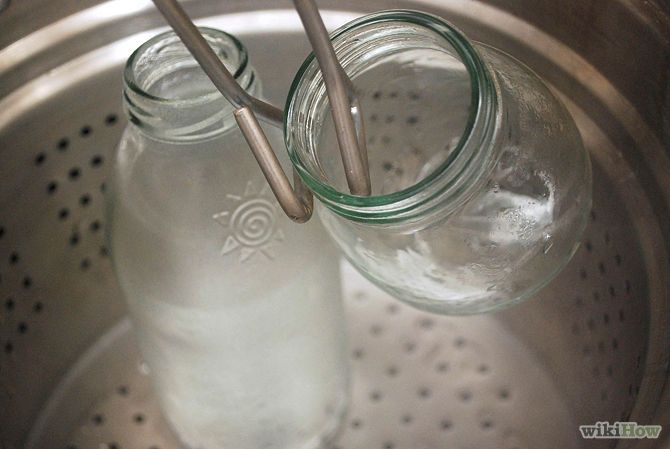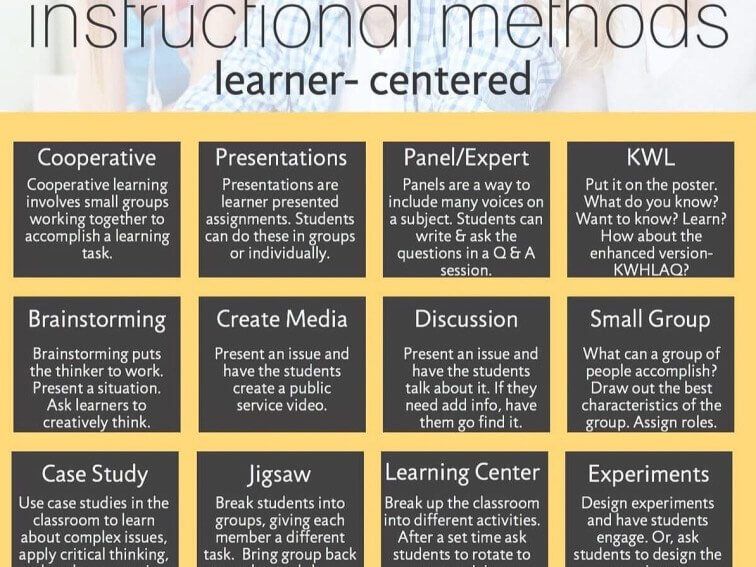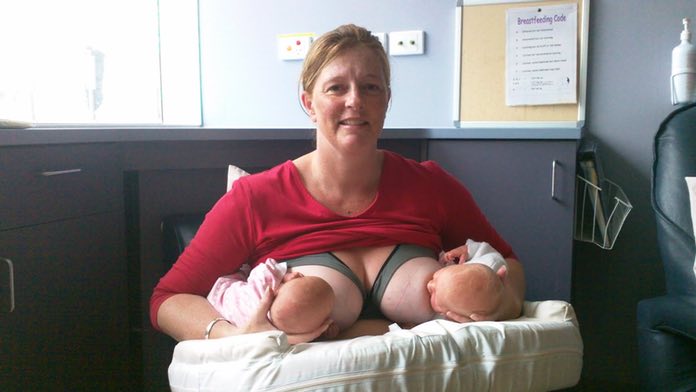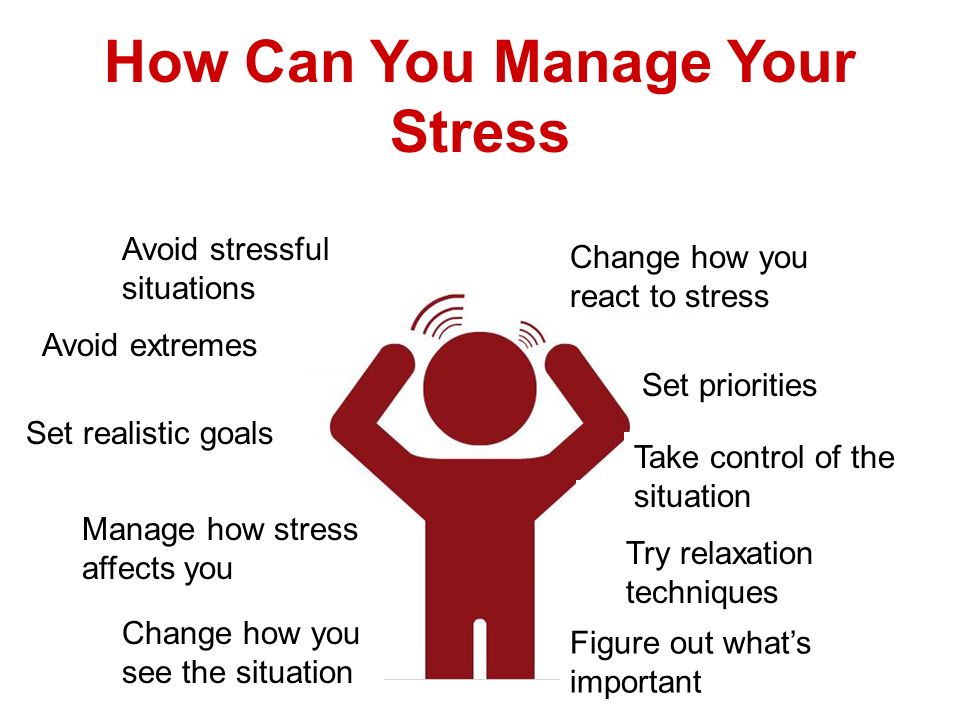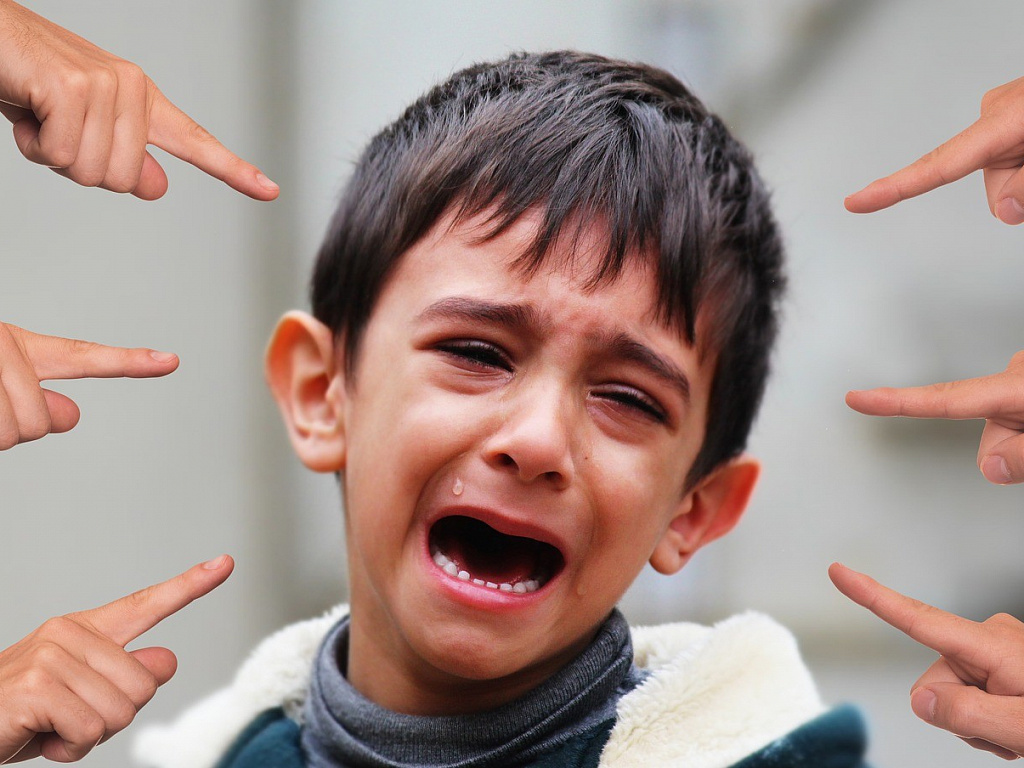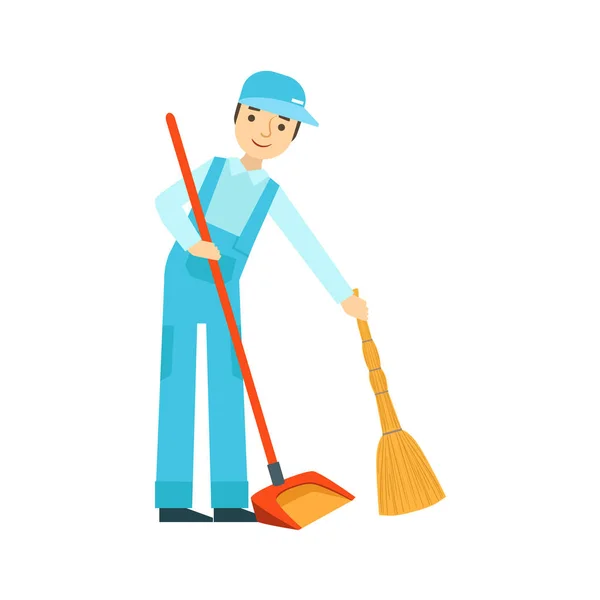How to sterilize baby bottles in boiling water
How to Sterilize Baby Bottles
Once you’ve done your research and decided on the best bottles for baby, there’s still another step to consider: how to clean them. Whether you’ve chosen glass, plastic or silicone bottles, you’ll have to keep them as pristine as possible to protect baby’s developing immune system. If you listen to advice from your mother or grandmother, you might be fretting over how to sterilize baby bottles—but nowadays sterilizing baby bottles isn’t absolutely necessary, except in certain situations. “This practice is a bit outdated now that the majority of homes in developed countries use treated municipal water,” says Caitlin Hoff, a health and safety investigator for ConsumerSafety.org. “There are, however, some cases in which you might want to sterilize a bottle.” Here, we break down when sterilizing baby bottles is a good idea and the best methods for the job.
In this article:
When to sterilize baby bottles
How often to sterilize baby bottles
How to sterilize baby bottles
How to clean baby bottles
When to Sterilize Baby Bottles
Sterilizing baby bottles is an added step beyond traditional cleaning that provides extra protection against germs. And generally speaking, it’s a one-and-done deal. “When you first buy bottles, it’s important to sterilize them at least one time,” says Samira Armin, MD, a pediatrician at Texas Children’s Pediatrics. After all, you don’t know where that bottle was before it was packaged and sold to you, so an initial sterilization is a quick, easy way to ensure baby’s health and safety. “After that, it’s no longer necessary to sterilize bottles or their accessories,” she adds. “Many years ago, when water supplies weren’t reliably clean, baby items required sterilization, but nowadays this is thankfully not an issue.”
That said, there are instances when you might want to sterilize baby’s bottle beyond that first use. According to Hoff, these include:
• If you’re using borrowed or second-hand bottles. With all the gear and supplies that babies require, some moms hit up consignment shops or borrow baby bottles from a friend. In these cases, it’s critical to sterilize pre-used bottles before giving it to your child for the first time. The same goes for bottles that have been used for older siblings in your own home.
The same goes for bottles that have been used for older siblings in your own home.
• If baby has been sick. It’s no fun when baby’s sick, so the last thing you want to do is risk re-infecting them by using unclean bottles. “If you’re concerned about any lingering germs or bacteria on your child’s bottles, sterilizing them will certainly put your mind at ease,” Hoff says.
• If baby was premature or has health issues. According to the Centers for Disease Control and Prevention (CDC), sterilization is particularly important if baby was born prematurely or has a weakened immune system.
• If you don’t have access to clean drinking water. If your home isn’t part of a municipality with clean drinking water, you use well water or you’re traveling in a country with questionable water, you may need to sterilize baby’s bottles often; once daily or even after each use would be prudent to avoid buildup of harmful microbes.
How Often to Sterilize Baby Bottles
As long as you have good quality municipal drinking water that isn’t coming from a well, it’s not necessary (or even recommended) to sterilize baby’s bottles too often. “Regular sterilization can potentially damage the bottle and allow chemicals to leach into the milk, especially if the bottle has BPA in it,” says Daniel Ganjian, MD, a pediatrician at St. John’s Health Center in Santa Monica, California. The Food and Drug Administration (FDA) banned the use of bisphenol A, or BPA, in baby bottles back in 2012 due to concerns over the chemical’s impact on infant development—but if you’re using older plastic bottles, make sure they don’t have the recycling number 7 imprinted on the bottom.
“Regular sterilization can potentially damage the bottle and allow chemicals to leach into the milk, especially if the bottle has BPA in it,” says Daniel Ganjian, MD, a pediatrician at St. John’s Health Center in Santa Monica, California. The Food and Drug Administration (FDA) banned the use of bisphenol A, or BPA, in baby bottles back in 2012 due to concerns over the chemical’s impact on infant development—but if you’re using older plastic bottles, make sure they don’t have the recycling number 7 imprinted on the bottom.
How often to sterilize baby bottles is really up to you, so do what feels right for your family. If you use a dishwasher with hot water and a heated drying cycle to clean your child’s feeding items, sanitizing baby bottles by hand isn’t called for. Otherwise, for extra germ removal beyond standard washing, the CDC says you can sanitize bottles at least once daily.
When to stop sterilizing baby bottles
If you do decide to sterilize baby’s bottles regularly, it’s okay to stop once baby is older than 3 months, according to CDC guidelines, since baby’s immune system isn’t quite so fragile anymore.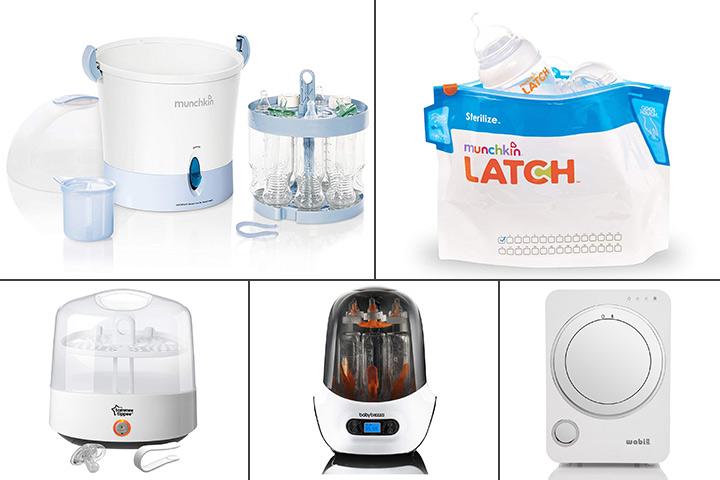
You should also stop sterilizing baby bottles and accessories if you notice any damage, Ganjian says. Glass bottles with cracks or chips should be tossed out, as should plastic bottles with splits, cracks, strong odors or any warping. Bottle nipples that have sustained noticeable wear and tear should always be replaced, since they can be a choking hazard.
How to Sterilize Baby Bottles
Sterilization kills bacteria in bottles through the use of high temperatures or chemicals, Armin says, and one method isn’t superior to another. So when it comes to deciding how to sterilize baby bottles, choose an approach that works best for you and your budget. Read on for step-by-step instructions for how to sterilize baby bottles using various techniques.
Sterilizing baby bottles with boiling water
No special equipment required here! To sterilize baby bottles using boiling water, all you need is water and a pot. And don’t worry—it’s fine to sanitize plastic bottles using this method.
- Fill a large, clean pot with enough water to cover the bottles.
- Submerge the freshly washed bottles in the water upside down, making sure there aren’t any air bubbles at the bottom.
- Bring the water to a boil.
- Boil the bottles for five minutes (check manufacturer guidelines for variations).
- Turn the heat off and remove the bottles using tongs.
- Place them on a clean, dry dishcloth and allow them to air dry.
Sterilizing baby bottles in the microwave
Another super-easy approach to sterilizing baby bottles? Using your microwave’s steam power! Here’s how to sterilize baby bottles in the microwave without any other special equipment:
- Start with a clean microwave.
- Fill bottles about halfway with water.
- Microwave on high for one to two minutes.
- Using oven mitts, remove bottles from the microwave, dump remaining water out and let the bottles air dry.
Another option is to purchase a microwave baby bottle sterilizer.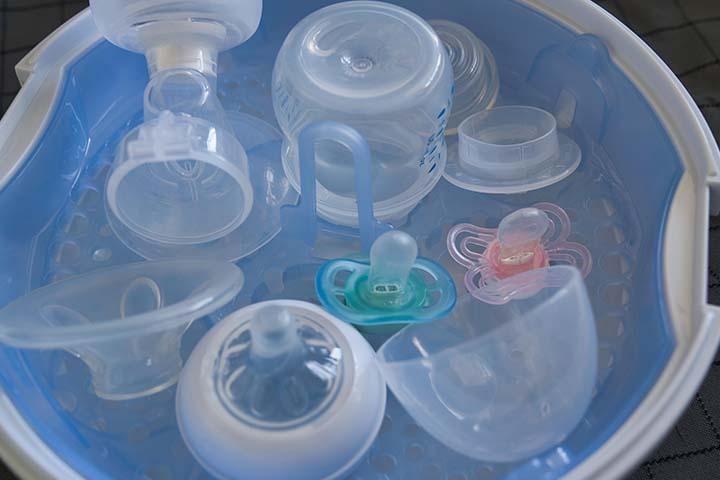 This type of sterilizer also harnesses the power of steam, but it encloses the bottles in a plastic casing to give them a more thorough cleansing. These handy sterilizers are widely available and typically cost about half as much as the better-known electric baby bottle sterilizers.
This type of sterilizer also harnesses the power of steam, but it encloses the bottles in a plastic casing to give them a more thorough cleansing. These handy sterilizers are widely available and typically cost about half as much as the better-known electric baby bottle sterilizers.
Sterilizing baby bottles with electric steam
If you know you’ll sleep easier if baby’s bottles are sterilized regularly, you may want to spring for a countertop bottle sterilizer. Steam sterilization can reach higher temperatures than boiling water, so it can kill more bacteria and mold, Ganjian says.
Though they’re a bit more pricey than any of the other options, electric baby bottle sterilizers are probably the quickest, easiest option if you want (or need) to sanitize bottles frequently. Simply follow the instructions provided by the manufacturer. Plus, they can be used to sanitize bottles, bottle parts, nipples and more. Many moms even use these for small plastic toys and teething rings once baby outgrows the bottle stage.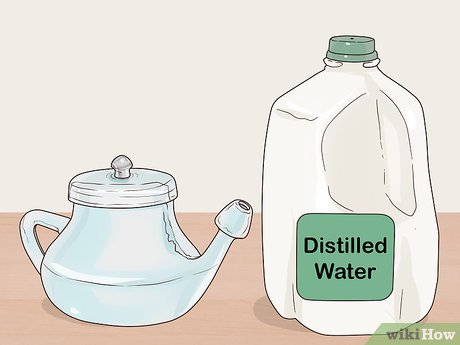 That’s knowing how to stretch a dollar!
That’s knowing how to stretch a dollar!
Sterilizing baby bottles with bleach
If you’re in a pinch and don’t have access to boiling water, steam or a dishwasher, the CDC condones the use of bleach to clean baby bottles. Here’s how to sterilize baby bottles with this method:
- Combine one teaspoon of unscented bleach with 16 cups of hot water.
- Submerge bottles in the solution, taking care to avoid any air bubbles in the bottom of the bottles.
- Soak bottles for two to five minutes, then remove with clean tongs.
- Place bottles on a clean dish towel to air dry. There’s no need to rinse, Armin says: “Any remaining bleach will break down quickly during the air-drying process and will not harm baby.”
Sterilizing baby bottles using sterilizing tablets
Wondering how to sterilize baby bottles when you’re away from home and don’t have access to your normal equipment? Food-grade, chlorine-based sterilizing tablets are just as effective at removing all the same microbes as the other sterilization techniques above. Be sure to follow the instructions on the packaging to ensure proper sterilization.
Be sure to follow the instructions on the packaging to ensure proper sterilization.
How to Clean Baby Bottles
Regardless of whether you decide to sterilize baby’s bottles, you’ll still have to thoroughly clean them after every feeding. “Newborns and infants have underdeveloped immune systems are vulnerable to infections by viruses, bacteria, parasites and fungi, which can all lead to illness. These germs can grow quickly if breast milk or formula is added to a partially used bottle that hasn’t been well cleaned,” Armin says. “Washing items thoroughly with hot water and soap is all that’s required to remove most harmful germs from bottles.” You can choose to wash bottles and their parts by hand or in the dishwasher. Here’s how:
Cleaning baby bottles in the dishwasher
Are your baby bottles dishwasher safe? Good news: Using your dishwasher’s hottest water setting and a heated drying cycle effectively sterilizes the bottles!
- Separate all bottle parts.
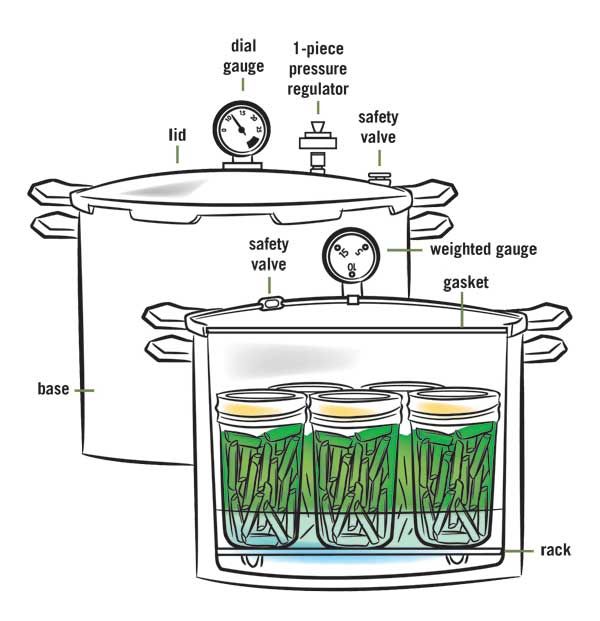
- Rinse the bottles and parts with clean water to remove any milk particles.
- Place all small parts (including rings, valves and nipples) in a dishwasher-safe basket to prevent them from falling to the bottom of the dishwasher.
- When possible, run the bottles on a hot-water cycle and heated drying cycle or select the sanitizing setting.
- Remove the bottles and parts from the dishwasher and allow to air dry on a clean dishcloth.
Cleaning baby bottles by hand
When cleaning by hand, the CDC recommends washing the bottles and their parts in a special container that’s only used for bottles, rather than having bottles come in contact with the sink, to prevent cross-contamination. You should also use a bottle brush or other cleaning utensil that’s set aside just for baby’s bottles.
- Start with clean hands.
- Separate the bottles and their parts and rinse each piece under running hot or cold water to remove any milk particles.
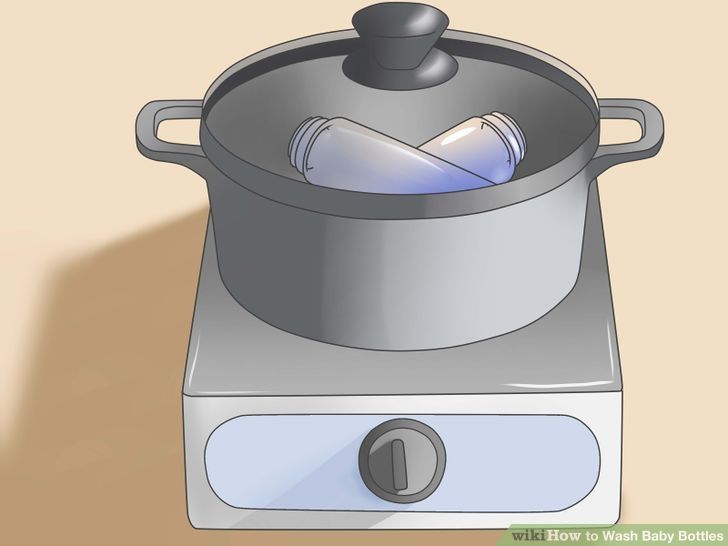 Don’t set the bottles down in the sink.
Don’t set the bottles down in the sink. - Fill a clean basin with hot water and soap.
- Scrub the bottles and parts with a bottle brush, taking care to thoroughly clean all the way to the bottom of the bottle.
- Clean inside the nipples, making sure to flush water through the tiny holes at the tips.
- Rinse again under running water.
- Air dry on a clean dishcloth.
Updated February 2020
Expert bios:
As a health and safety investigator for ConsumerSafety.org, Caitlin Hoff educates families about important consumer topics that impact the general public’s health and safety. She holds a certification in CDC Health Literacy for Public Health Professionals.
Samira Armin, MD, FAAP, is a pediatrician at Texas Children’s Pediatrics. She earned her medical degree from St. George’s University in 2009 and specializes in newborns and healthy eating.
Daniel Ganjian, MD, is a pediatrician at Providence St. John’s Health Center in Santa Monica, California. He earned his medical degree from the University of California, Irvine, in 2004 and is a member of the Alpha Omega Alpha honor society, a designation given to just 10 percent of American physicians.
John’s Health Center in Santa Monica, California. He earned his medical degree from the University of California, Irvine, in 2004 and is a member of the Alpha Omega Alpha honor society, a designation given to just 10 percent of American physicians.
Please note: The Bump and the materials and information it contains are not intended to, and do not constitute, medical or other health advice or diagnosis and should not be used as such. You should always consult with a qualified physician or health professional about your specific circumstances.
Plus, more from The Bump:
16 Best Baby Bottles
How Much Should a Newborn Eat?
Pumping Breast Milk 101
Sterilising baby bottles - NHS
It's important to sterilise all your baby's feeding equipment, including bottles and teats, until they're at least 12 months old.
This will protect your baby against infections, in particular diarrhoea and vomiting.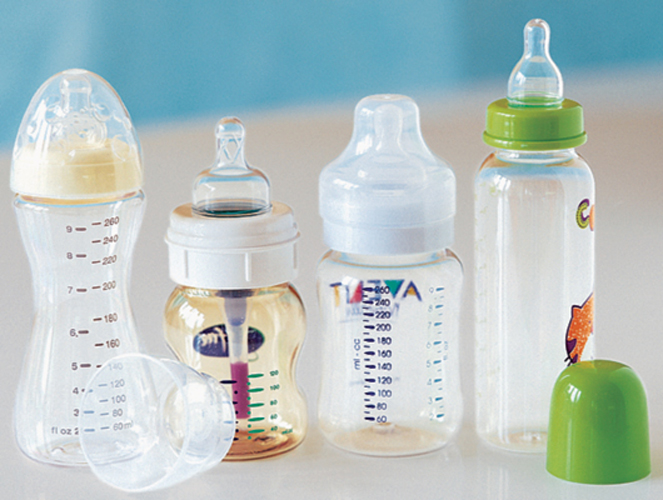
Before sterilising, you need to:
- Clean bottles, teats and other feeding equipment in hot, soapy water as soon as possible after feeds.
- Use a clean bottle brush to clean bottles (only use this brush for cleaning bottles), and a small teat brush to clean the inside of teats. You can also turn teats inside out then wash them in hot soapy water. Do not use salt to clean teats, as this can be dangerous for your baby.
- Rinse all your equipment in clean, cold running water before sterilising.
You can put your baby's feeding equipment in the dishwasher to clean it if you prefer. Putting feeding equipment through the dishwasher will clean it but it does not sterilise it. Make sure bottles, lids and teats are facing downwards. You may prefer to wash teats separately by hand to make sure they are completely clean.
The advice about how to clean your baby's feeding equipment applies to all of the equipment, and whether you are using expressed breast milk or formula milk.
How to sterilise baby feeding equipment
There are several ways you can sterilise your baby's feeding equipment. These include:
- cold water sterilising solution
- steam sterilising
- boiling
Cold water sterilising solution
- Follow the manufacturer's instructions.
- Leave feeding equipment in the sterilising solution for at least 30 minutes.
- Change the sterilising solution every 24 hours.
- Make sure there are no air bubbles trapped in the bottles or teats when putting them in the sterilising solution.
- Your steriliser should have a floating cover or a plunger to keep all the equipment under the solution.
Steam sterilising (electric steriliser or microwave)
- It's important to follow the manufacturer's instructions, as there are several different types of sterilisers.

Sterilising by boiling
- Make sure the items you want to sterilise in this way are safe to boil.
- Boil the feeding equipment in a large pan of water for at least 10 minutes, making sure it all stays under the surface.
- Set a timer so you do not forget to turn the heat off.
- Remember that teats tend to get damaged faster with this method. Regularly check that teats and bottles are not torn, cracked or damaged.
After you've finished sterilising
- It's best to leave bottles and teats in the steriliser or pan until you need them.
- If you do take them out, put the teats and lids on the bottles straight away.
- Wash and dry your hands before handling sterilised equipment. Better still, use some sterile tongs.
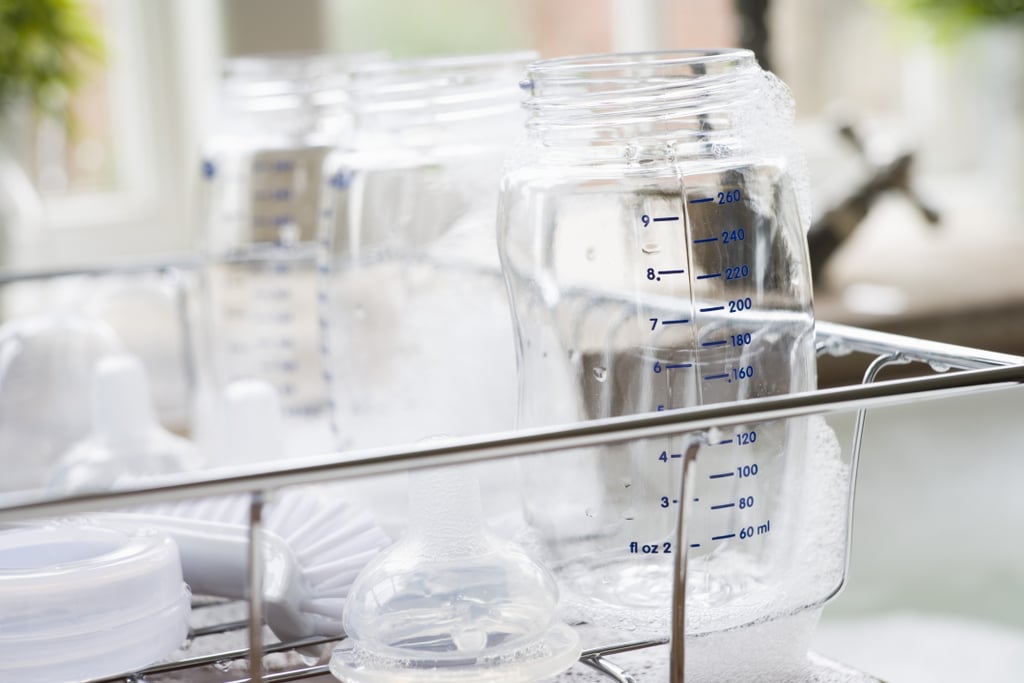
- Assemble the bottles on a clean, disinfected surface or the upturned lid of the steriliser.
Find out more about expressing breast milk and how to make up formula feeds.
Page last reviewed: 24 February 2023
Next review due: 24 February 2026
How to sterilize baby bottles? Advice and guidance for young parents.
At some point, even mothers who happily breastfeed their babies need a feeding bottle. It can be the beginning of complementary foods, a long distance trip when you need to supplement the baby with milk, or even just a very hot summer, because of which the newborn begins to drink water. All children's dishes must be sterilized. You can use various devices or improvised means for this. Before sterilizing baby bottles, parents can choose a cleaning method and aids based on what is easier, more affordable, and more reliable for them.
Is it necessary to sterilize dishes?
Sometimes the question arises whether there is any point in sterilization. Or is this procedure a meaningless relic of the past? The answer is simple - any dishes that a child will come into contact with require special cleaning.
What sterilization gives:
- complete destruction of microbes and pathogenic bacteria;
- the entry of viruses into the baby's esophagus from the surfaces of the bottles is excluded;
- reduces the risk of transmission of foodborne infections.
Primary treatment is required for new teats and bottles, as there is no guarantee that these items were in sterile conditions before being sold. Packaging particles and dust may remain on silicone and plastic. Feeding bottles also need to be sterilized regularly. Food debris that accumulates in hard-to-reach places can provoke the growth of bacteria, which will lead to indigestion.
Important! Do not strive for absolutely sterile conditions. A newborn, receiving a small "dose" of bacteria from the outside world, gradually adapts to it. The main thing is that these doses are minimal, available for absorption.
A newborn, receiving a small "dose" of bacteria from the outside world, gradually adapts to it. The main thing is that these doses are minimal, available for absorption.
Methods for Sterilizing Baby Bottles and Cleaners
When deciding how to sterilize baby bottles, parents can choose to sterilize baby bottles or use handy tools. Effectively eliminates pollution invisible to the eye - boiling, steaming, ultraviolet. Before processing, it is worth preparing the dishes: remove old dirt, wash the walls with a sponge with detergent for baby bottles, clean hard-to-reach places with a brush, rinse with running water. What can be used for sterilization:
Boiling water
Bottles, teats and pacifiers can be boiled in water. Beforehand, all the dishes are disassembled into elements. Water is drawn into the pan, completely covering the dishes, so that nothing touches the bottom or walls. Everything is boiled for 3-7 minutes, after which it is laid out on a clean, ironed cotton towel.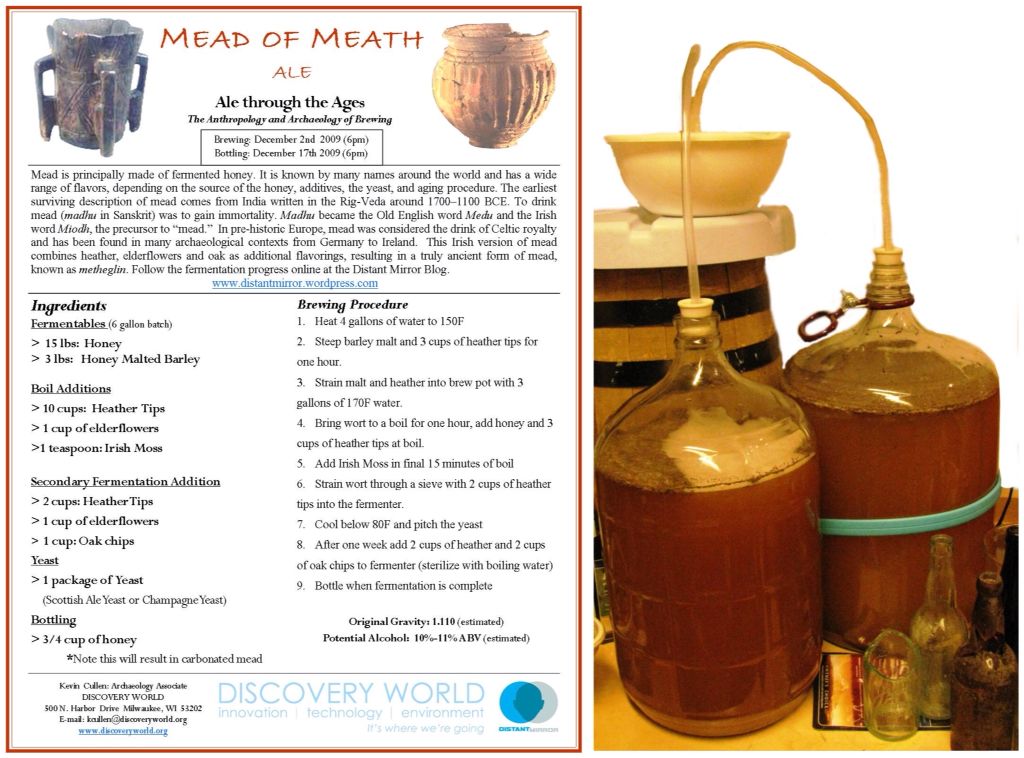
Rules to be observed:
- use filtered water;
- Set aside a separate pot or ladle for sterilization;
- do not leave the dishes to boil unattended - something may burn;
- only boil bottles that can withstand high temperatures;
- do not add soda, salt or other products to the water.
Boiling is the simplest and most affordable method that does not require additional costs. The effectiveness of this method has been proven; at high temperatures, all microbes, bacteria, and viruses die. But the method also has disadvantages: it is not always possible to control the long boiling process, there are no conditions for organizing boiling, dishes under the influence of boiling water can deteriorate faster.
Microwave
The microwaves inside the oven sterilize items in a relatively short period of time. But for the processing of children's dishes, water will still be required, although it does not have to be brought to a boil at all. Cleaned bottles are placed in a microwave container filled with water. Cleaning is performed for 6-8 minutes at maximum power (if any, the Boiling mode is used).
Cleaned bottles are placed in a microwave container filled with water. Cleaning is performed for 6-8 minutes at maximum power (if any, the Boiling mode is used).
After switching off, do not immediately remove the container from the microwave - delayed boiling is possible. It is necessary to wait for the water to cool, and then take out the nipples and drying bottles on a towel. For greater safety, it is better to use a microwave sterilizer. Such devices are equipped with notches for monitoring the water level, convenient nests for dishes and a lid that prevents splashing. In modern models, tweezers are immediately included in the package, which is convenient and safe to get bottles.
The advantage of the microwave oven is the prevalence of the device, they are installed in children's hospitals and mother and child rooms at railway stations. In a microwave oven, you can sterilize the elements of breast pumps, as the interior space can accommodate quite bulky items. Cons - can not be used to clean dishes with metal elements and metallized decorations.
Multicooker
If you don't know how to sterilize silicone pacifiers in the microwave or boiling water, you can use the multicooker bowl. Processing of children's dishes in it can be of two types: in boiling water or steam. It is better to boil bottles and nipples in a bag of water, preventing them from sticking to the walls of the bowl. This method is only suitable as an urgent one, if there is no special plastic grill. If there is a grill, it is better to steam the pacifiers. The sequence of actions is as follows:
- place bottles, liners, nipples and pacifiers on a special plastic grid with round holes so that objects do not touch each other;
- water is poured into the multicooker bowl - one liter;
- a grate with objects is installed, the lid is closed;
- the “Steam”, “Cooking” program is suitable for sterilization, processing time is 5-10 minutes;
- after turning off the multicooker, leave it closed until the liquid has cooled;
- open carefully so as not to burn yourself with steam.
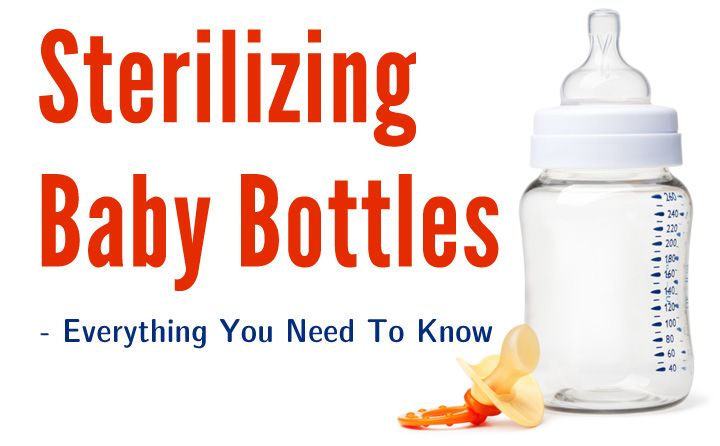
Instead of a multicooker, you can also use a steamer. The main thing is that the grid for objects should not be metal, but plastic. In this case, you do not have to worry that the rubber nipples will stick to the surface.
The advantages of the method are autonomy and simplicity. Cons - it is not always convenient to sterilize a couple of bottles, a massive multicooker is not installed everywhere.
Dishwasher
A number of modern bottles, pacifiers and nipples have models that can be sterilized in the dishwasher. Machines with high temperature, the possibility of steaming dishes, drying are suitable for cleaning. This processing method is the simplest, since it excludes preliminary cleaning, it is enough to remove food residues from the containers, place them inside the dishwasher and start the necessary cycle.
But parents also note some disadvantages: they don't want to drive the dishwasher for a small amount of dishes, special detergents for children's plates are not always available. Moreover, not every family can afford a dishwasher.
Moreover, not every family can afford a dishwasher.
Electric steam sterilizer
Special sterilizers are best suited for processing baby bottles, as they are all prepared for this procedure. Especially convenient for young families who do not know how to sterilize children's dishes in a saucepan with boiling water. Although the principle of operation is also based on boiling and supplying steam to the dishes. Water is poured into the lower container, and objects to be processed are laid out on the grate from above. In sterilizers, it is possible to clean not only bottles and pacifiers from pathogenic bacteria, but also rubber toys, breast pumps, teethers, rattles without batteries.
Advantages of the steam sterilizer:
- several compartments for different types of dishes;
- quick offline cleaning;
- no need to look for a place to dry dishes safely;
- automatic shutdown at the end of work.
Parents can purchase models that already come with bottles and nipples.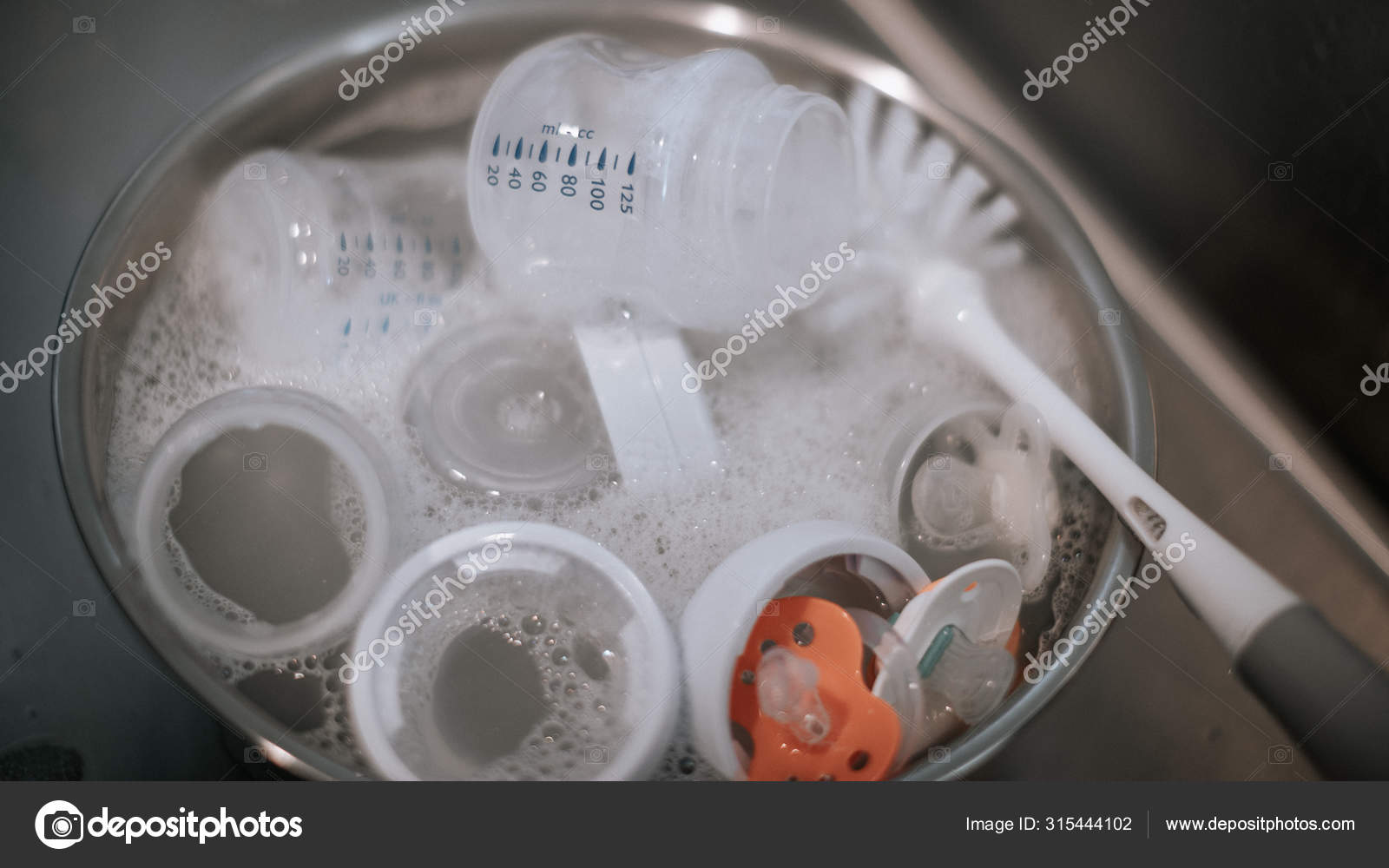 This completeness is convenient for mothers who practice breastfeeding and do not plan to buy a lot of bottles. For large families, devices designed for the simultaneous cleaning of several bottles are suitable.
This completeness is convenient for mothers who practice breastfeeding and do not plan to buy a lot of bottles. For large families, devices designed for the simultaneous cleaning of several bottles are suitable.
The disadvantage of the electrosterilizer is the short period of its use. But such devices are quite in demand, if necessary, they can be transferred to relatives or sold.
Special tablets
Antiseptic tablets can be used for urgent sterilization of teats, bottles, pacifiers. They are convenient to use on vacation, on the road, in other conditions when it is not possible to boil the dishes. The tablet is dissolved in water, bottles are filled with liquid. The downside is the very high cost of tablets and their non-proliferation.
Bags
Special ziplock bags can be used for microwave sterilization. Pacifiers are placed in them, water is poured. The closed package is placed in the microwave for 2 minutes. The method attracts with the speed of processing and simplicity, but it is not entirely convenient due to the rapid wear of the packages.
Parents can determine up to what age they sterilize baby bottles based on their baby's needs. You can gradually abandon special cleaning after a year, but you should not do it abruptly. Especially if the baby is not gaining weight well, has little appetite, is prone to colds and intestinal diseases.
Everything you need for sterilization can be purchased from our online store. Call +375 (29) 555-96-96 and check the availability of children's products on the site.
HOW TO STERILIZE PHILIPS AVENT BOTTLES
Teats and bottles harbor millions of germs. They are not afraid of boiling water, soda and detergents. The only thing that kills them is hot steam, which literally dissolves bacilli with a probability of up to 99.9%. Porridge and milk keep longer. A formula-fed baby is less likely to get sick.
So mums, finish your feedings with poorly washed bottles and learn how to disinfect them the way our grandmothers did. Only in a new way.
Only in a new way.
How to sterilize baby bottles
Washing with a brush or sponge is a must after every feeding. And it is better to sterilize in the evening or in the morning, in order to get rid of all pathogenic bacteria and not worry about the cleanliness of children's accessories.
When doing this, you must follow the safety rules: otherwise you can inadvertently scald or deform plastic dishes.
Below are three general guidelines for sterilizing baby bottles.
- The utensil must not be immersed in boiling water, otherwise it will soften and melt.
- Cups and bottles are placed with their neck down: so that the steam cleans the inside, and the condensate flows down the walls into the bowl.
- Bottles must not touch the sides of the pan as they may melt and stick to them.
After sterilization, it is better not to remove the dishes from the container for about ten minutes. It should cool down to a comfortable temperature. And if you really need it, you should use tongs, oven mitts or a kitchen towel folded in several layers.
And if you really need it, you should use tongs, oven mitts or a kitchen towel folded in several layers.
By the way: Baby utensils: how to choose - 4 key parameters to help
How to sterilize pacifiers for children?
Teats are sterilized in the same way as bottles, but with the base down - to steam not only the outer, but also the inner walls. And let the moisture drain.
Types of sterilization
Two types of sterilization are used for the treatment of children's utensils - steam and dry heat.
- In the first case, the vessel is steamed.
- In the second, washed and still wet bottles are heated in the oven, sterilizer, microwave, multicooker and even in the dishwasher, which supports steam treatment at 80+°C.
Life hack: how to steam bottles and other things with sterilization bags (such as Nuvita NV1087)
- Put dishes in food bags.
- Pour 60-70 ml of water into them.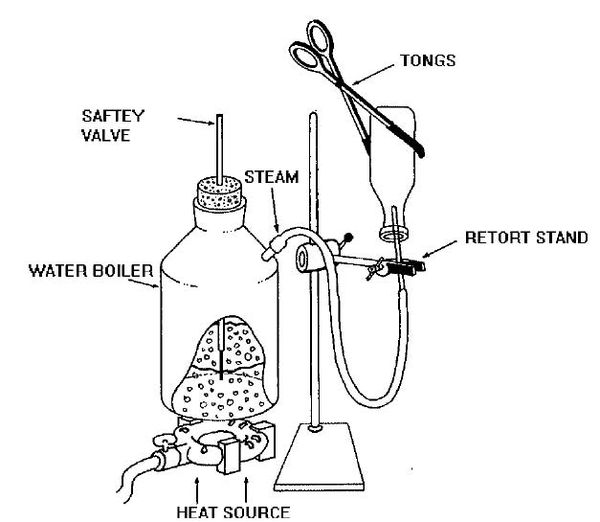
- Microwave for 2-3 minutes.
The sterilization process is as simple as a copper penny. Evaporating moisture destroys pathogenic (and not only) microbes from various surfaces. Materials exposed to hot air and steam do not creak from cleanliness, but are sterile and safe for health.
In this way, not only nipples and bottles are disinfected, but also brushes, bowls, thermoses and cups like Avent SCF796/01 and so on.
Interesting article: When did the first baby stroller appear: 10 facts from history
Microwaveable
The microwave oven offers 3 sterilization options. Not all of them are suitable for processing nipples.
- Place the bottles in a glass or ceramic dish → fill it with water → cover with a lid → put the microwave on maximum power for 5-7 minutes.
- Pour water into the bottle 1-1.5 cm from the bottom → microwave for 3-5 minutes. The nipples will have to be washed separately.
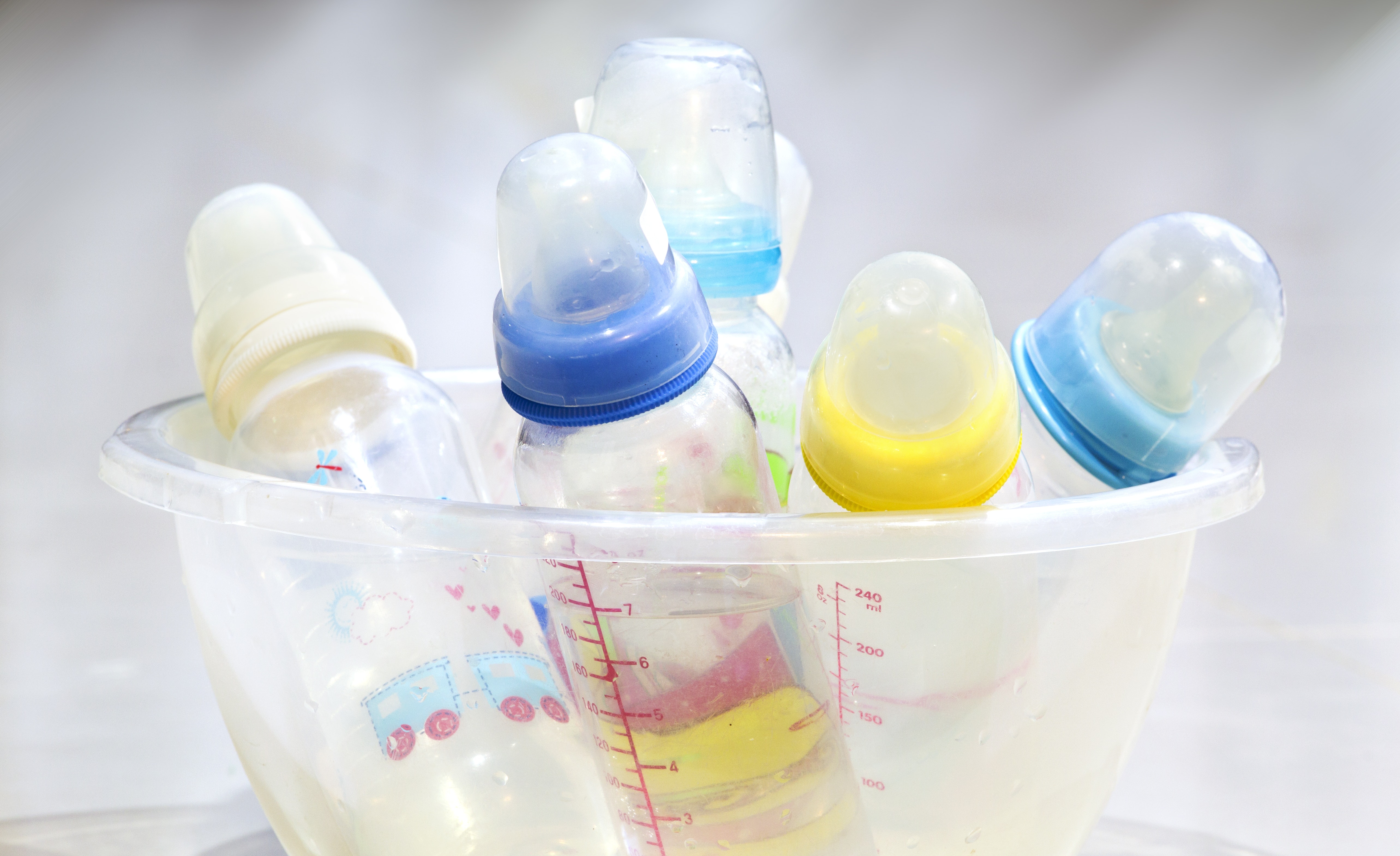
- In the Nuvita type microwave sterilizer (NV1085), it is enough to put the container → pour water → click on the valve → set the device to work for 5-8 minutes.
Picking up a hot dish is easier with tongs or oven mitts.
Microwave sterilization has its advantages and disadvantages, described in the table:
Informative article: TOP-7 baby strollers 3 in 1 the inner bowl of the multicooker. So that the saucepan does not smell like food, otherwise bottles or children's dishes will take over this smell.
The subsequent sterilization process in the multicooker is similar to microwave.
- Pour ≈ 1-1.5 liters of water into the bowl.
- Place the steam rack and place the bottles upside down.
- Seal the steam device hermetically.
- Set "Steam" mode to 15 minutes or "Sterilize" mode.
- Remove the dishes and cover with a towel to cool completely.
This method also has its pros and cons.
Sterilizer
Children's sterilizer is an electrical device for processing utensils. Works carefully, the bottle will not crack due to overheating.
Everything is calculated with medical precision in the method of steaming with a sterilizer. The device holds up to 6-8 bottles and the same number of nipples. A great example of such a device is the Philips Avent 3-in-1 steam sterilizer. It is ideal for a family with several kids.
How the device works is as simple as it gets. It consists of step by step actions.
- Pour cold water into the tank (how much is indicated in the instructions).
- Place pre-cleaned bottles in special niches. This should be done upside down.
- Close cover.
- Switch on the sterilizer for 7-15 minutes.
- Allow the device to “cool down” for 5-7 minutes. This is necessary so that you do not accidentally burn yourself with steam.
If the use of the bottles "does not burn", then they can be left under a closed lid - so they will be sterile for another 4-5 hours.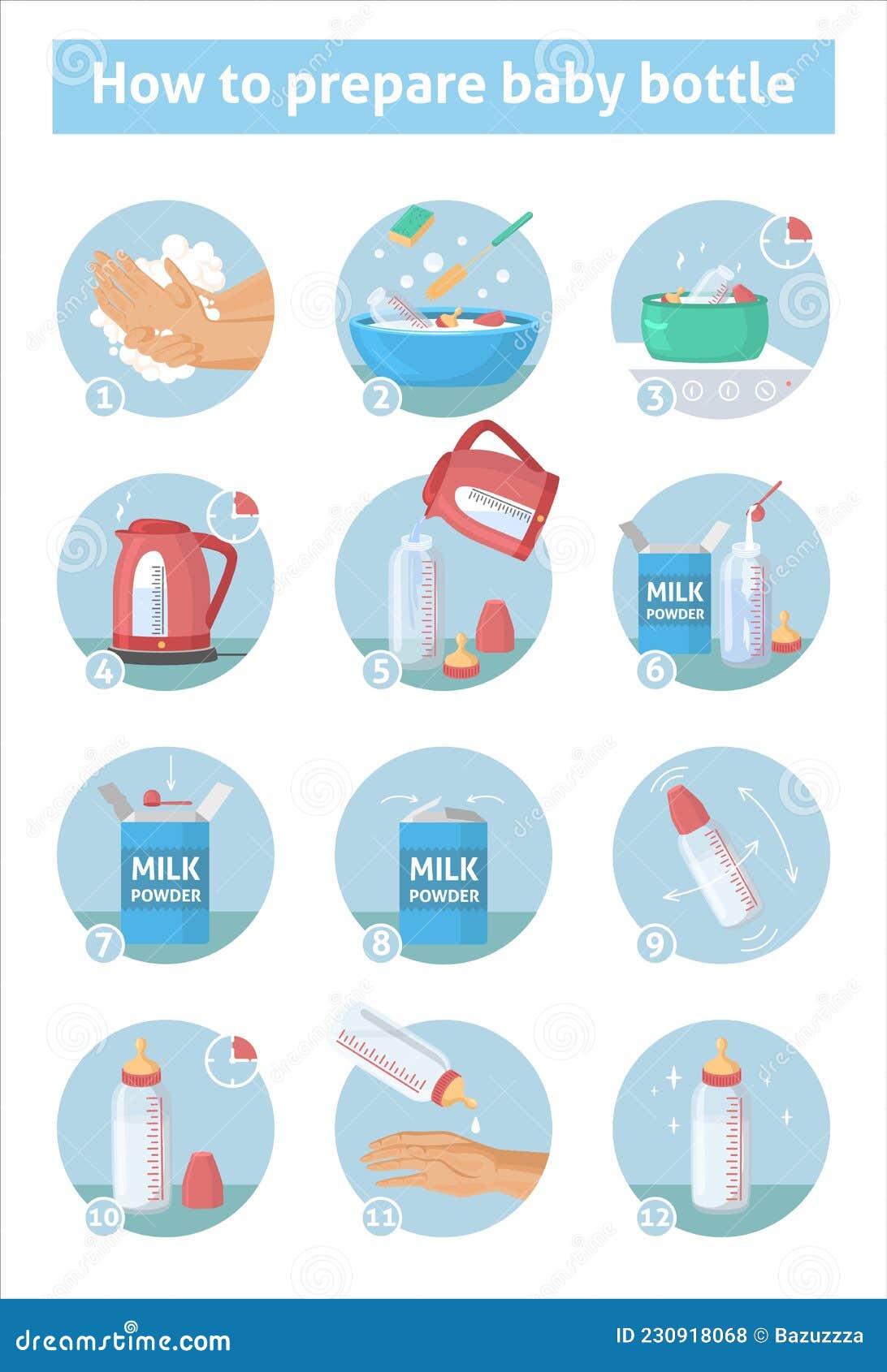 If you need to get one of the bottles, take only it, and close the rest of the clean bottles with lids.
If you need to get one of the bottles, take only it, and close the rest of the clean bottles with lids.
Before putting the dishes into the sterilizer, make sure they are clean. The device removes germs and odor, but does not cope with pollution.
Read: Top 5 Best Convertible Strollers
Avoid Sterilization Mistakes: 4 Common
Many parents make basic mistakes that are best addressed in advance.
1. Unwashed or poorly washed utensils
Leftover food provokes the reproduction of microflora and can cause stomach problems in a child. And sterilization does not wash out food residues - only cleaning can do this.
2. Pot boiling
You can't boil! The maximum allowable temperature for children's utensils is 110 ° C. And often it is even less. Otherwise, the bottles may melt.
3. Installation in a steamer and microwave without water is contraindicated
The device will burn, and the dishes will melt.